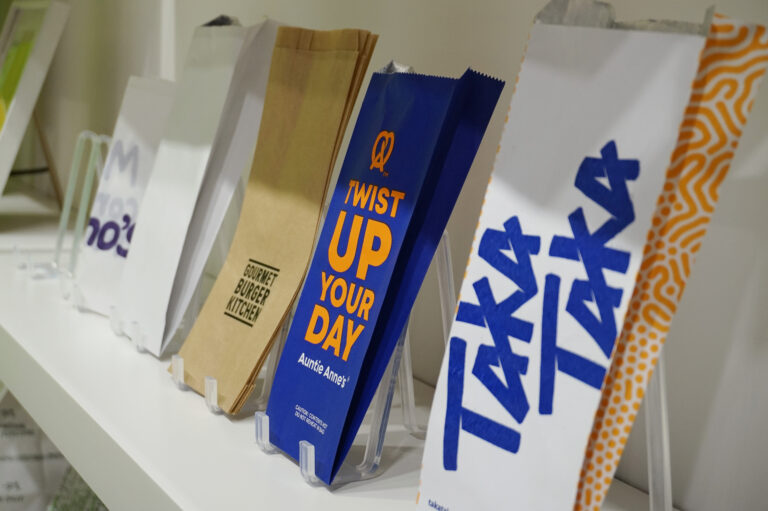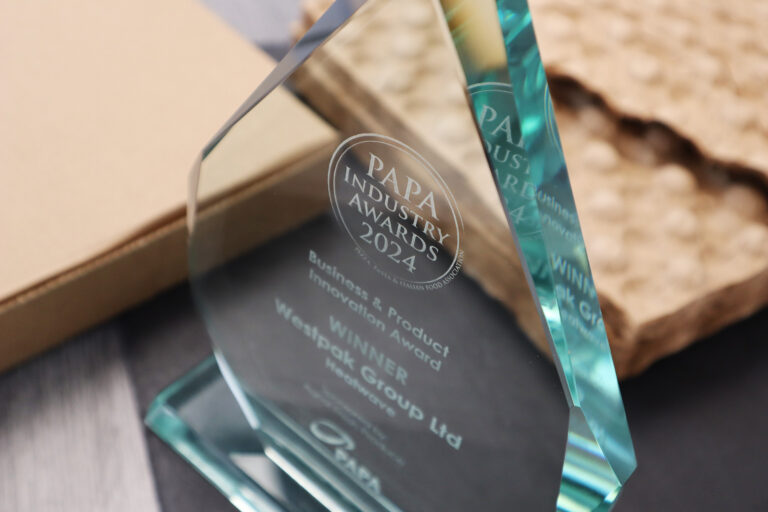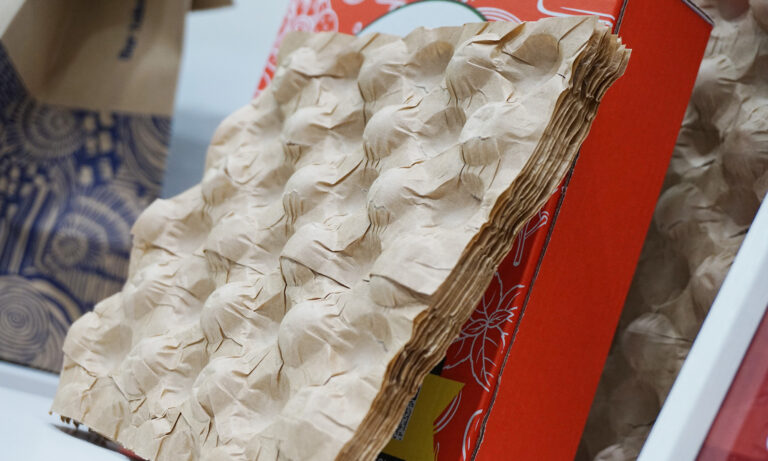Westpak were thrilled to recently take part in the ‘Sustainable Packaging News’ online circular economy conference. In case you missed the video, here’s the written article exploring ‘recycling infrastructure vs packaging innovations’.
Author: Chris Fiander, Marketing Manager, Westpak
There seems to be a stronger consensus than ever across the food packaging industry to work ever-closer to a circular economy model. Where they still may be a large area of disagreement, however, centres on whether this movement should primarily lean upon the innovation of packaging designs, or the innovation of wider, surrounding infrastructure such as improved recycling facilities and processes.
Finding the optimal balance between these two approaches will take a range of factors into account. For example, there will be various assessments as to which approach offers greater efficiency against overall carbon footprint levels, but there will also be issues around funding and budgets, practicality, branding considerations and uptake levels from consumers.
Recycling infrastructure
If we look first at some of the industry’s flagship innovations and improvements in overall infrastructure, we can see a clear trend in recent years for grocery retailers to provide on-site recycling facilities for soft plastics and other hard-to-recycle plastic items. In many instances, the rollout of these facilities has been widespread.
This seemed to offer a fantastic solution for problematic items such as crisp packets and soft vegetable wrapping that are notorious for falling off the circular sustainability model as largely single-use items. Furthermore, this solution has so far been free for consumers.
There have been issues with the infrastructure behind these initiatives with concerns over the handling and transportation of soft plastics once deposited by consumers as well as concerns relating to the underlying funding mechanism.
Another vital consideration will be how popular these supermarket soft plastic recycling facilities have actually been. Due to how recently many of these facilities have been launched, and then properly expanded across the country, it’s probably too soon to be able to gain an accurate picture as to the success of their uptake with consumers.
The Waste and Resources Action Programme, more commonly known as ‘WRAP’, provides a really useful overview of these facilities. It highlights that the aim is for supermarkets to provide such facilities primarily as a way of bridging the gap until such plastic items are routinely able to be collected by local authority household collections. WRAP also acknowledged that the collection facilities provided by retailers could be more widespread, don’t accept a full range of materials and are currently under-utilsied.
We can see that there are now small number of localised regions in the UK offering household collections of these types of plastics, but these services are only part of trials with potential expansion still being quite a way into the future – and with this resting on the success of these initial trials. Tying into these household collection trials is the FlexCollect Flexible Plastic Fund which is a £2.9million pilot”. Looking at the scale of infrastructure, needed, that figure looks to be quite small.
Packaging Innovations
As mentioned, the major alternative to innovations in surrounding infrastructure is the innovations within packaging designs themselves.
Thankfully, the UK grocery and foodservice markets have provided a fairly consistent level of innovation in this respect. These packaging innovations have routinely centred around the four Rs of sustainability: ‘reduction’, ‘re-use’, ‘recycle’ and ‘re-purposing’; all of these helping to push us closer to a circular economy by either reducing the packaging inflow that a circular model must process, extending an item’s life until processing becoming required again or by directly aiding recycling processes.
At Westpak, we’ve worked with a range of grocery retailers to bring such innovations to market – so it’s a process we’re very familiar with. This has included Waitrose’s initial ‘Unpacked’ trails which moved fresh produce away from plastic punnets and towards ventilated card-based trays. We also worked with Co-op in their launch of paper-based herb sleeves that offered an easily recyclable alternative to traditional plastic sleeves. We also recently worked with Waitrose again in launching fully paper-based punnets for several of their kiwi fruit ranges.
One of the easier areas of packaging innovation and adaptation has simply been the removal of plastics where unnecessary by streamlining packaging designs and utilising the minimal amount of plastic packaging, only where absolutely necessary for each product.
As these types of innovation become more widespread, interesting debates may appear from brands needing to weigh commercial branding considerations against packaging sustainability and streamlining targets. Of course, it may well become the case that as consumers continue to expect brands to act in the most sustainable ways possible – as part of a broader CSR awareness – packaging that that is overtly sustainable will, in itself, become be a fundamental element of successful branding and design. With that in mind, we also then start to find packaging that is designed to appear sustainable without actually being so – but that’s a topic for a whole other discussion.
Foodservice Relevance
As we look at this balance between packaging innovation and infrastructure development, it’s also worth looking at the very different environments of the grocery and foodservice markets.
The recyclability of foodservice packaging and the benefits this has in the consumer mindset is arguably not as important for foodservice products in comparison to grocery. In a supermarket environment, packaging that is clearly identifiable to the end-consumer as being sustainable and easily recyclable will increasingly play a factor in purchasing patterns at that point-of-sale. For foodservice, with many takeaway items ordered online, this consideration plays a far smaller role as the packaging is largely hidden from view at the point-of-sale. As such, it could be argued that there is more pressure on grocery brands to develop and move in-line with sustainable packaging innovations than foodservice brands operating primarily in takeaway and home-delivery markets. The alternative way of looking at this is to say that foodservice brands might need greater incentivisation to stimulate such packaging innovation.
Alternatives
As a last consideration, we also need to think about alternatives to the usual approaches toward a circular economy and packaging sustainability. Packaging credentials such as being ‘compostable’ or ‘biodegradable’ have become increasingly widespread and present a disruption to the classic circular economy model.
Instead of aiding reuse and recycling, such products intentionally leave the cycle with the aim of doing so in a less environmentally damaging way.
This is an interesting development that relies on both packaging innovation and, as is the case for ‘industrially-compostable’ packaging, the availability of specialist processing infrastructure. Key questions here will focus on whether leaving the circular model in this way is more or less sustainable in contrast to more circular packaging lifecycles. This will also need to take into account the availability of the necessary processing equipment, the initial carbon footprint of production and how many times recyclable products are able to realistically be recycled before eventually leaving the circular loop.
Conclusion
To try and reach some form of conclusion to these points, packaging innovation and infrastructural investments are clearly both important and valuable in creating a more sustainable landscape for food packaging – with that applied to both the grocery and foodservice industries.
These industries are no-doubt still finding the ideal equilibrium between these two approaches. This is likely to be a long-term back-and-forth process of gradual change and refinement as each product settles into its best possible design, format and logistical framework for the best overall sustainability benefits that take a multitude of factors into account.
I would say that if any factor will act most effectively as the catalyst to accelerate this process, it will be for consumers to continue to increase their demand for increasingly sustainable products at the very high rate that we have already seen. This will of course spur on further sustainable packaging innovations and supporting infrastructure. But it will also begin to pressure brands and legal frameworks into demanding enhanced transparency over which sustainability methods, whether
You can also still watch the full video for the first part of the online conference below.


